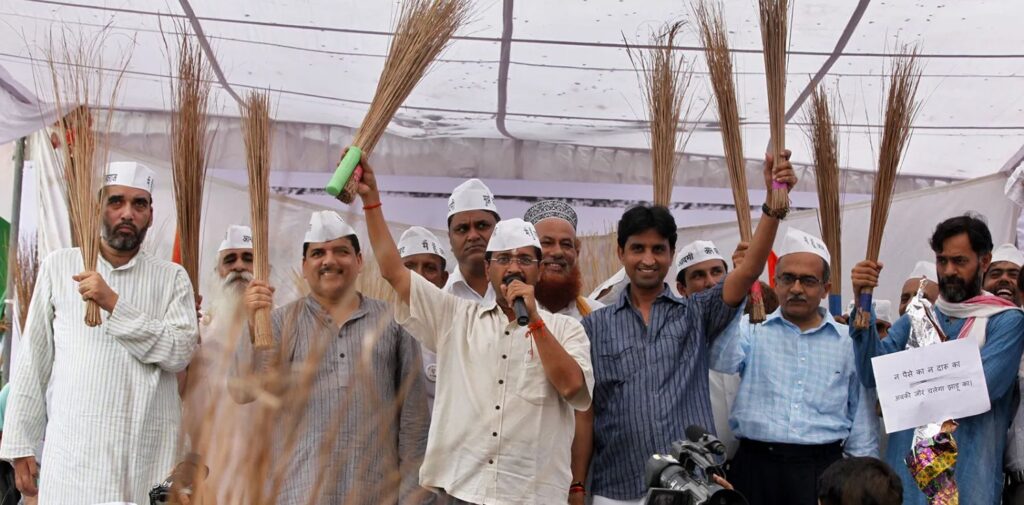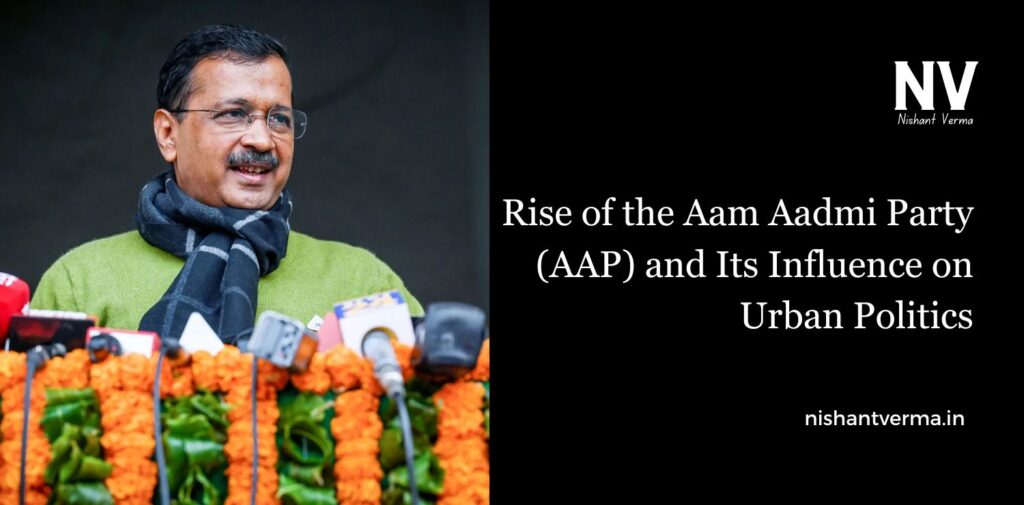In the world of politics, new parties come and go, but some leave a lasting impact. One such party in India is the Aam Aadmi Party (AAP). It is a relatively new party, but it has quickly become an important player in Indian politics, especially in urban areas. Let’s take a simple look at how the Aam Aadmi Party came to be, what it stands for, and how it has influenced urban politics in India.
What is the Aam Aadmi Party (AAP)?
The Aam Aadmi Party, also known as AAP, is a political party in India that was formed in 2012. The name “Aam Aadmi” means “common man” in Hindi, and that’s exactly what the party aims to represent—the people who are not rich or powerful, but who form the majority of the country.
AAP was born out of the India Against Corruption movement, which was a protest against corruption in the Indian government. The movement was led by social activist Anna Hazare, and it gathered huge support from the public, especially in urban areas. After the movement gained momentum, Arvind Kejriwal, a former government officer, along with other activists, decided to form a political party. They wanted to bring change to the system and fight against corruption from within the government.
So, in 2012, AAP was officially formed, and it promised to work for the common people, fight corruption, and improve the way politics was done in India.

AAP’s Big Breakthrough: Delhi Elections
AAP’s first big test came in 2013, when it contested the Delhi Legislative Assembly elections. Delhi, India’s capital city, is an important place with many people from different parts of the country living there. It was the perfect place for AAP to prove itself.
In these elections, AAP surprised everyone by winning 28 out of 70 seats, making it the second-largest party in the Delhi Assembly. This was a huge achievement for a new party. Arvind Kejriwal became the Chief Minister of Delhi, and AAP promised to bring clean and honest politics to the city.
Though AAP’s first term was short, their message of fighting corruption and working for the common man had caught the attention of many people. The party’s focus on education, healthcare, and reducing corruption quickly earned it support, especially in urban areas.
Key Ideas and Promises of AAP
AAP’s rise can be attributed to the simple yet powerful ideas it stands for. Here are some of the key promises and values the party promotes:
- Fighting Corruption: One of AAP’s most important goals is to fight corruption in politics. The party believes that leaders and government officials should work for the people, not for personal gain. Arvind Kejriwal, the party leader, made his career by exposing corruption in the government before starting AAP. This made him a trusted figure for people who were tired of dishonest politicians.
- Better Services for the Common People: AAP’s focus is on improving the basic services that people need every day. This includes things like education, healthcare, water supply, electricity, and roads. AAP promised to make these services better and more affordable for everyone, especially in cities where these services are often lacking.
- Transparency in Governance: AAP believes that government decisions should be open and transparent. This means that people should be able to see how decisions are made and how public money is spent. AAP promised to ensure that government works in a way that is open to the public.
- Empowering the People: Another key idea for AAP is empowering the common people to take part in politics. They believe that every citizen should have a say in how the government is run. They also promised to bring people into the decision-making process and involve them in solving problems.

AAP’s Impact on Urban Politics
AAP’s rise has had a big effect on politics, especially in urban areas. Urban areas in India are home to millions of people, and they face many challenges, such as poor infrastructure, bad roads, water shortages, and lack of good healthcare and education. These problems make people frustrated with the government, and they want change.
Here’s how AAP has influenced urban politics:
- Focus on Public Services: In many cities, the government had been failing to provide basic services to the people. AAP promised to focus on improving these services. For example, when AAP came to power in Delhi, they made education and healthcare their top priorities. They worked on improving government schools, providing free healthcare in government hospitals, and ensuring that people had access to clean water and electricity. These efforts earned AAP a lot of praise from urban citizens, who saw improvements in their daily lives.
- Challenging Traditional Politics: Before AAP, many people in urban areas were tired of the same old political parties that didn’t seem to care about their problems. AAP came as a fresh alternative. They promised to be different by staying away from traditional political practices like paying for votes, using unfair means to win elections, and making false promises. People in cities, especially young people, found this new approach exciting. It gave them hope that change was possible.
- Youth Involvement: AAP has managed to attract many young people to politics. Young people in cities often feel disconnected from politics because they don’t see the government addressing their concerns. AAP’s promises of clean politics, better education, and job opportunities resonated with young voters, and the party managed to gain significant support from them.
- Protests and People Power: Another important aspect of AAP’s rise was its use of protests to highlight issues. AAP leaders, especially Arvind Kejriwal, used public protests as a way to bring attention to problems like corruption and the lack of basic services. These protests were not just political events but became a way for ordinary people to express their dissatisfaction with the government. This helped to increase public participation in politics and showed that the common man had a voice.
- Decentralized Politics: AAP’s rise also marked a shift in the way politics was done in urban areas. Instead of having a few powerful leaders making all the decisions, AAP emphasized the importance of local leaders and communities taking charge of their own problems. This decentralized approach to politics helped to build trust with people and gave them more control over their local issues.
Challenges and Criticism
Despite its success, AAP has faced several challenges. One of the main criticisms has been its sudden change in approach. Sometimes AAP has been seen as inconsistent in its policies, and people have questioned whether it can truly bring about long-lasting change. There have also been some accusations of the party being too focused on the figure of Arvind Kejriwal, rather than building a strong team of leaders.
Additionally, while AAP has brought positive changes in Delhi, its influence in other cities and states outside Delhi has been limited. This has made it hard for AAP to become a national force in Indian politics, and its growth beyond Delhi is still a work in progress.

AAP’s Future in Indian Politics
Despite the challenges, AAP’s rise has shown that people in urban areas are looking for a change. They want clean, honest, and effective governance, and they are ready to support leaders who can deliver on those promises. AAP’s influence on urban politics has been significant, and it has forced other political parties to rethink their approach to governance.
In the future, AAP has the potential to expand its reach beyond Delhi and influence more cities across India. If it can continue to focus on improving public services, fighting corruption, and empowering ordinary people, it could play an even bigger role in Indian politics.
Conclusion
The rise of the Aam Aadmi Party is a story of how a new party can make a difference in the lives of ordinary people. By focusing on corruption, better public services, and involving the people in decision-making, AAP has changed the way politics is done in urban areas. While challenges remain, AAP’s influence on urban politics is undeniable, and its story shows that in a democracy, the power truly lies in the hands of the people.




